Stone walls offer both timeless beauty and practical function, enhancing landscapes, architecture, and interiors alike. From traditional dry-stacked borders to modern gabion features, each approach uses natural materials to create walls that provide privacy, retain soil, or simply serve as striking focal points. In this article, explore 20 distinct stone wall ideas—ranging from rustic fieldstone boundary walls to intricate mosaic panels—each designed to inspire your next project with durability, aesthetic appeal, and versatility.
1. Dry-Stacked (Dry Stone) Wall
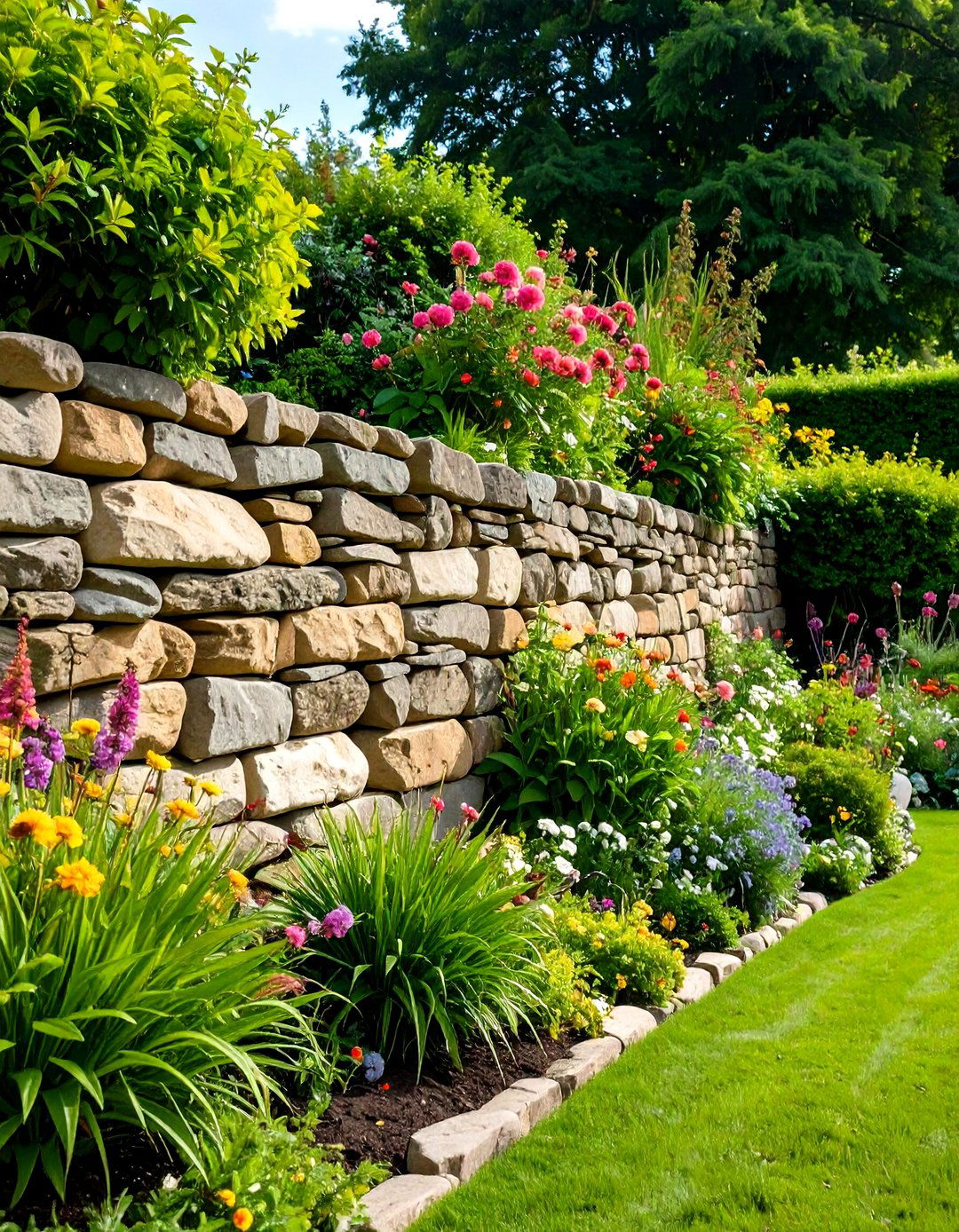
A dry-stacked stone wall involves fitting stones together without mortar, relying on careful placement and gravity for structural integrity. This traditional method dates back centuries and offers a rustic, natural aesthetic that blends seamlessly into rural or garden settings. Dry-stacked walls can be constructed using local fieldstone, reducing transportation costs and environmental impact. Properly built, they provide excellent drainage—ideal for sloped sites—while their gaps offer microhabitats for plants and wildlife. Maintenance is minimal; occasional realignment of stones after freeze-thaw cycles preserves stability. Dry-stacked walls typically last decades if foundations and batter (slight inward lean) are correctly executed.
2. Gabion Wall

Gabion walls consist of galvanized steel mesh cages filled with stones, bricks, or recycled materials. Originally used in civil engineering to control erosion, they’ve become trendy garden features for their industrial-chic appearance and eco-friendly credentials. Gabions are modular and easy to install, requiring only level foundations and infill of choice material. They excel as retaining walls, boundary fences, or raised planting beds. The visible stones create texture and color variation, while the structure’s permeability ensures excellent drainage. Filling gabions with locally sourced or reclaimed stone enhances sustainability, and varying cage heights allows for creative terracing and seating elements in outdoor living spaces.
3. Terraced Retaining Wall
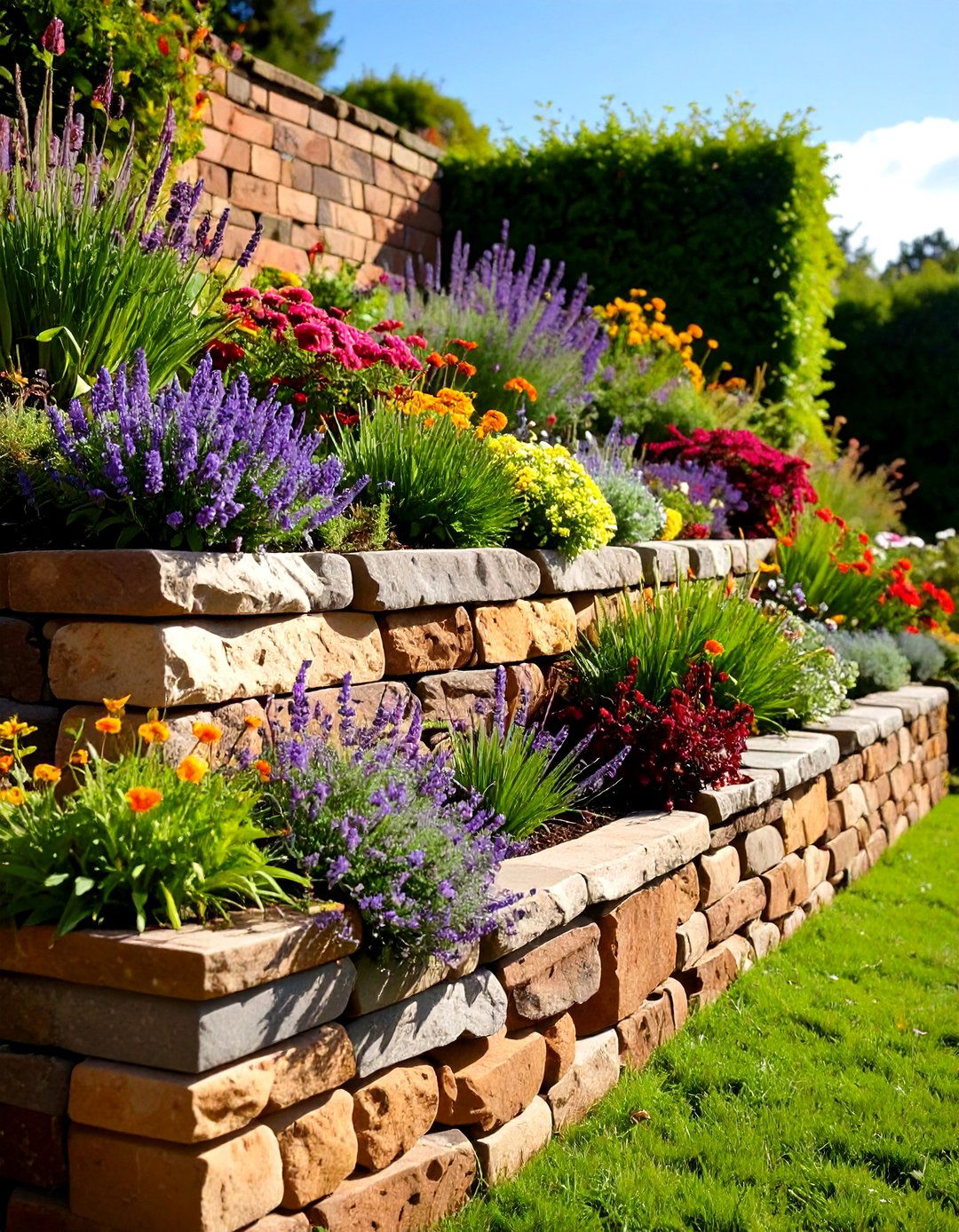
Terraced retaining walls transform steep or uneven terrain into usable, level platforms. Using stacked stone or masonry units, each terrace supports soil and plantings above. This approach not only prevents erosion but also creates layered garden beds ideal for herbs, vegetables, or ornamental plantings. Terraces can follow the natural slope or form geometric patterns for formal landscapes. Incorporating steps between levels improves access, while adding low-profile lighting enhances safety and aesthetics. Stone choices range from rustic fieldstone to precision-cut blocks, allowing customization of color, texture, and joint style. Proper drainage behind each wall—through gravel backfill and weep holes—ensures long-term stability.
4. Ashlar Stone Veneer Wall

Ashlar veneer uses finely cut, rectangular stones laid in straight or running bond patterns for a refined appearance. Applied over structural walls or panels, veneer offers the look of massive stonework with reduced weight and cost. Varied sizes—ranging from small, thin tiles to large slabs—allow for modern or traditional designs. Mortar joints can be flush for a sleek finish or recessed to accentuate each stone. This technique suits both interiors and exteriors, wrapping fireplaces, facades, or feature walls. Veneer stones are available in limestone, slate, or quartzite to match color schemes, and their uniformity simplifies installation compared to irregular rubble walls.
5. Fieldstone Boundary Wall
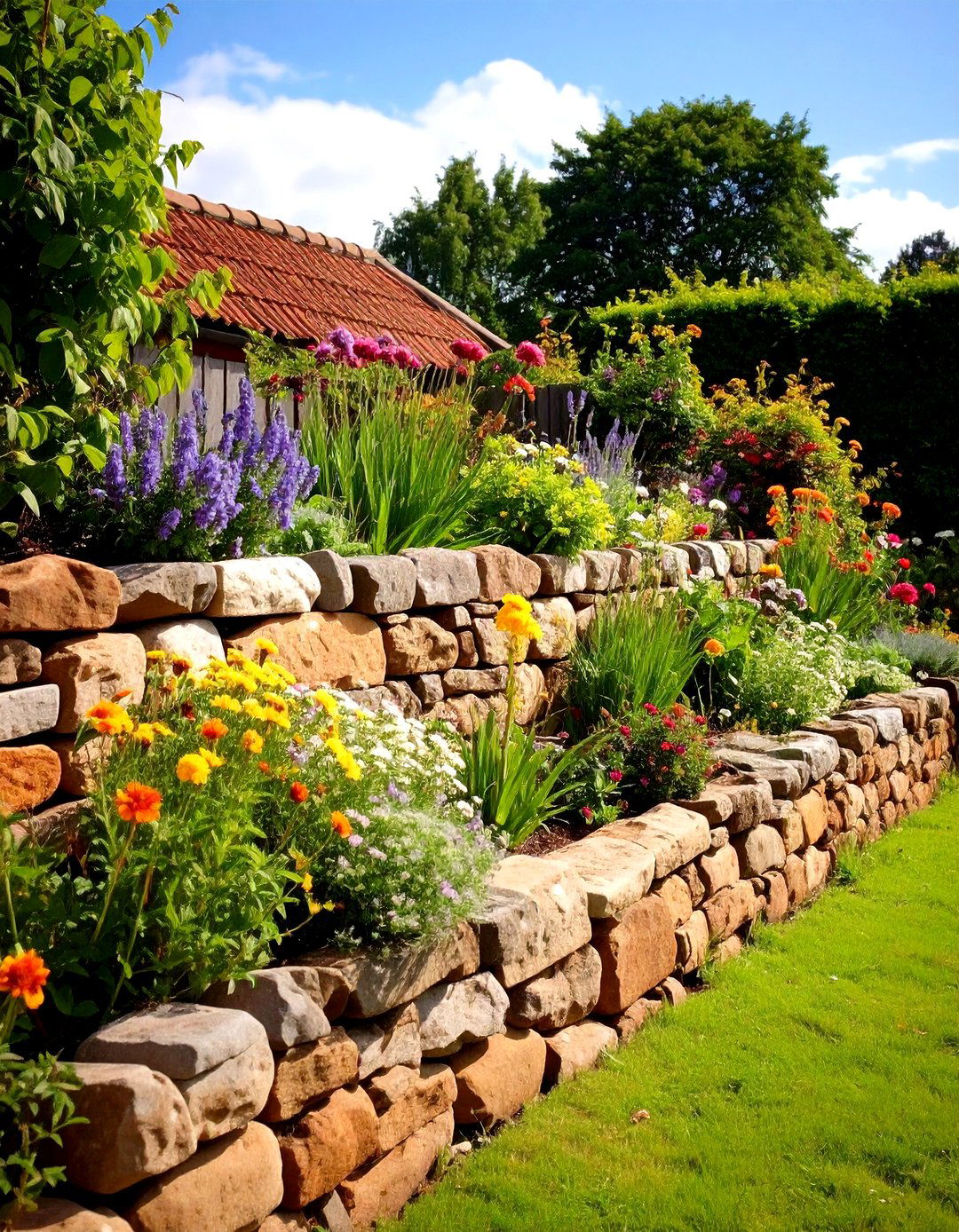
Fieldstone walls use naturally weathered stones gathered from fields or quarries, offering a rugged, earthy charm. Their irregular shapes and a range of sizes—from fist-sized to larger boulders—create walls with organic contours. These walls define property lines or garden spaces and can be built dry-stacked or with mortar for extra strength. Mortared fieldstone reduces gaps, providing a solid barrier that deters small animals. The varied stone colors—grays, browns, and rusts—complement rustic and cottage-style homes. Occasional planting of trailing herbs or moss softens the wall’s profile, integrating it into the landscape while adding seasonal interest.
6. Raised Garden Bed Wall

Stone walls can double as elevated planter beds, offering ergonomic gardening and decorative appeal. Constructed at comfortable heights—typically 18–24 inches—these beds provide better drainage, warmer soil, and defined growing areas. Stones can be dry-stacked for a casual look or mortared for permanent beds. Fill with high-quality soil and compost to support vegetables, perennials, or ornamental grasses. The stone façade contrasts lush plantings, highlighting blooms and foliage. Incorporating larger capstones creates natural seating, while embedding metal ties between layers ensures stability under soil pressure. Raised stone beds are ideal for small yards, generating focal points and functional garden zones.
7. Seating Wall
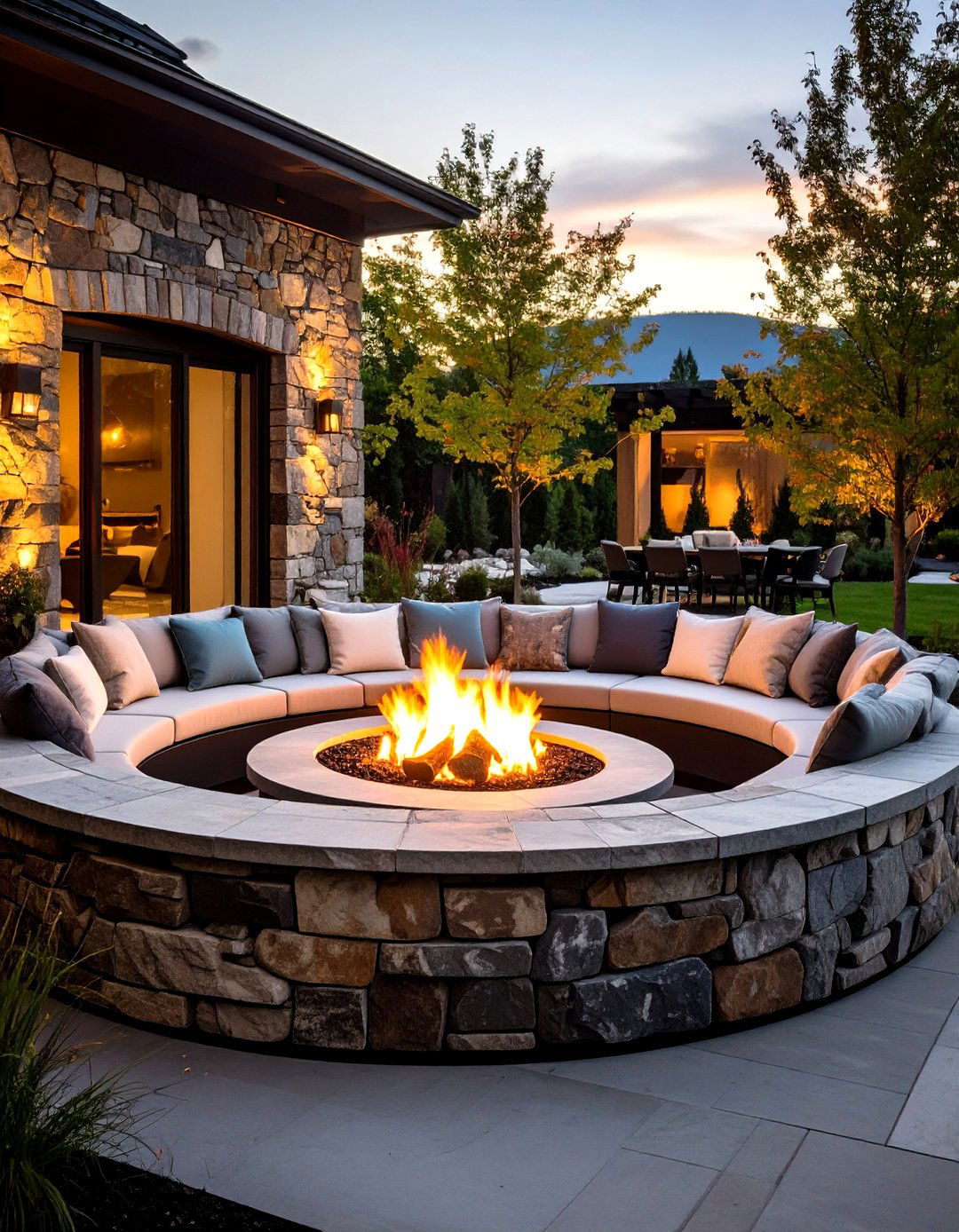
Integrating seating into stone walls extends functionality to patios, fire pits, or social areas. Typically built at bench height (18 inches), seating walls use capstones as comfortable, flat surfaces. The underlying wall can be constructed from irregular rubble, cut stone, or even gabions, matching the project’s style. Curved or straight layouts accommodate gatherings, and adding backrests—or soft cushions—enhances comfort. Low-voltage LED strips beneath the capstone subtly illuminate seating at night. Seating walls also serve as retaining walls for surrounding lawns or gardens, maximizing space usage. Proper anchoring and frost-resistant foundations ensure the structure remains safe and stable over time.
8. Fire Pit Surround Wall
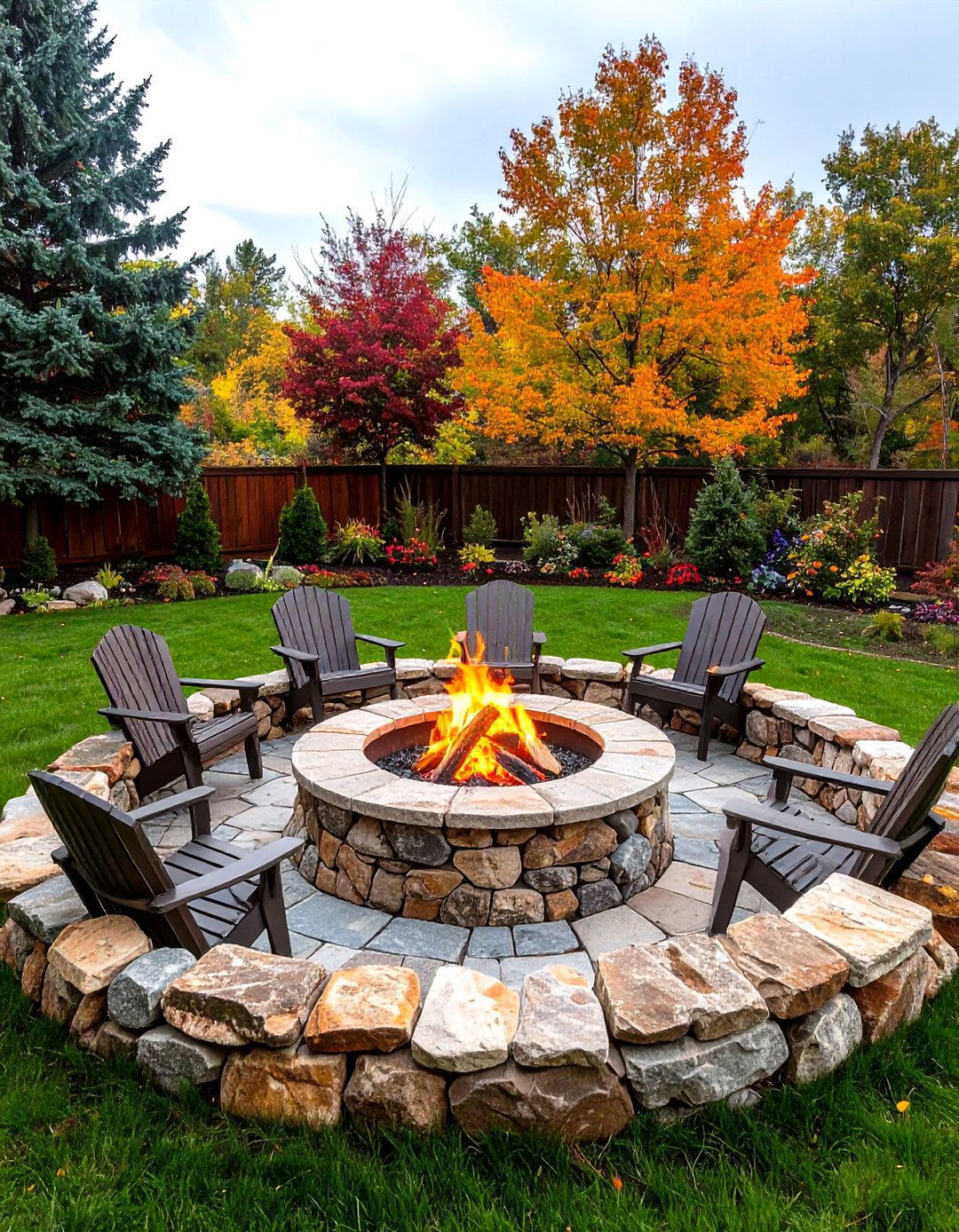
A circular or semi-circular stone wall around a fire pit creates a cozy gathering spot. The wall acts as both a windbreak and a barrier to retain seating cushions or logs. Durable stones—such as granite or basalt—resist heat and weathering. Mortar joints sealed with high-temperature grout maintain integrity, while decorative capstones define the seating edge. Integrate small niches within the wall to store firewood or outdoor utensils. Surrounding pathways of stone pavers enhance the transition between the fire area and adjacent patios or lawns. The organic texture of the stone complements flickering flames, producing a rustic, inviting ambiance.
9. Water Feature Stone Wall
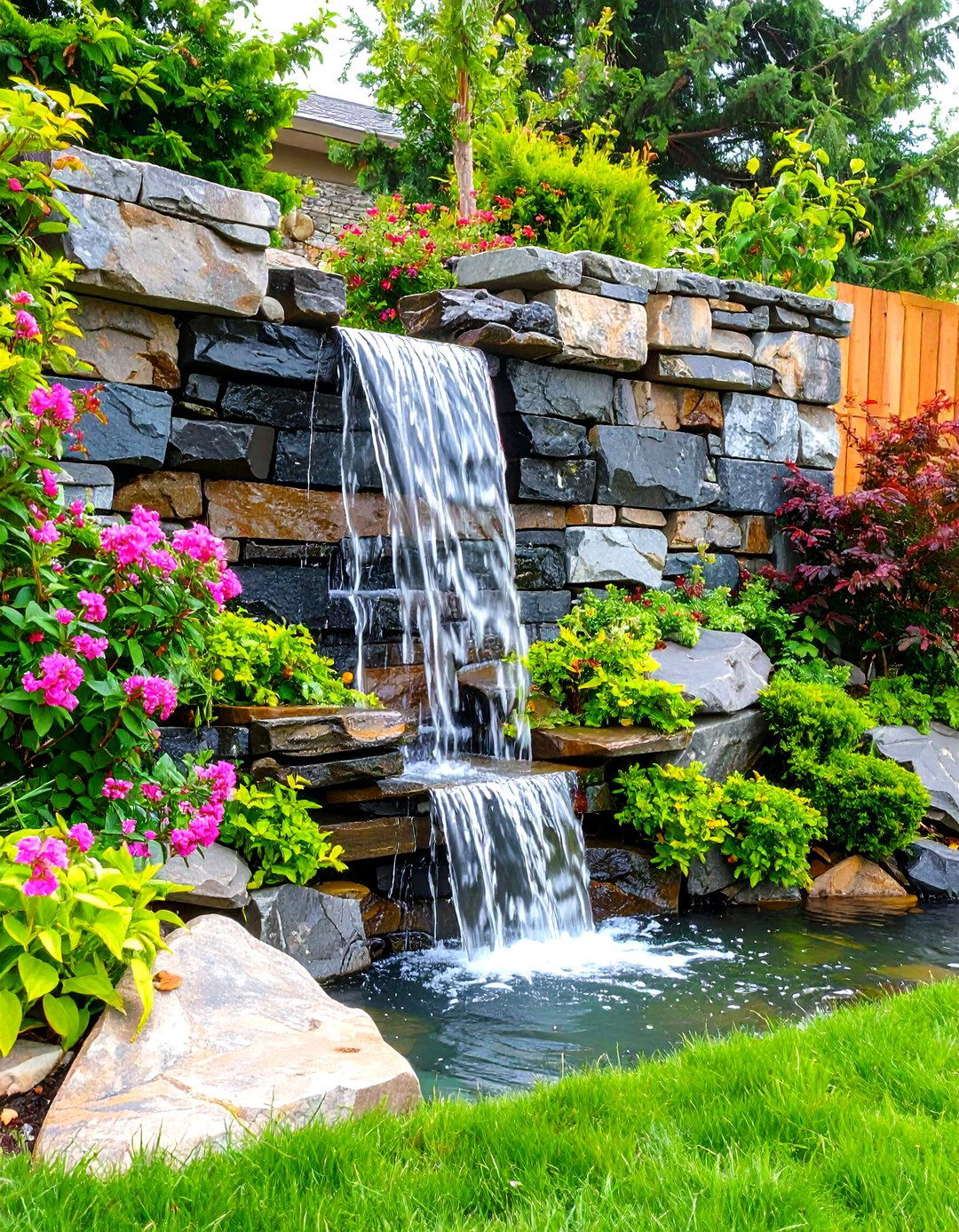
Incorporating water into a stone wall adds movement and tranquility. Water cascades over stone cladding or from spouts embedded in masonry. Natural stone veneers—slate, quartzite, or travertine—provide textured surfaces that break up water flow, creating gentle sheet or trickling effects. Beneath, a reservoir collects water for recirculation. LED uplighting highlights stone textures after dark. A backdrop wall conceals plumbing and pump equipment, while plantings at the base soften hard edges. Combining smooth and rough stones yields varying water sounds—from whisper to cascade. Such walls work well in courtyards, entryways, or pool areas, merging stone’s solidity with fluid dynamism.
10. Mosaic Stone Feature Wall
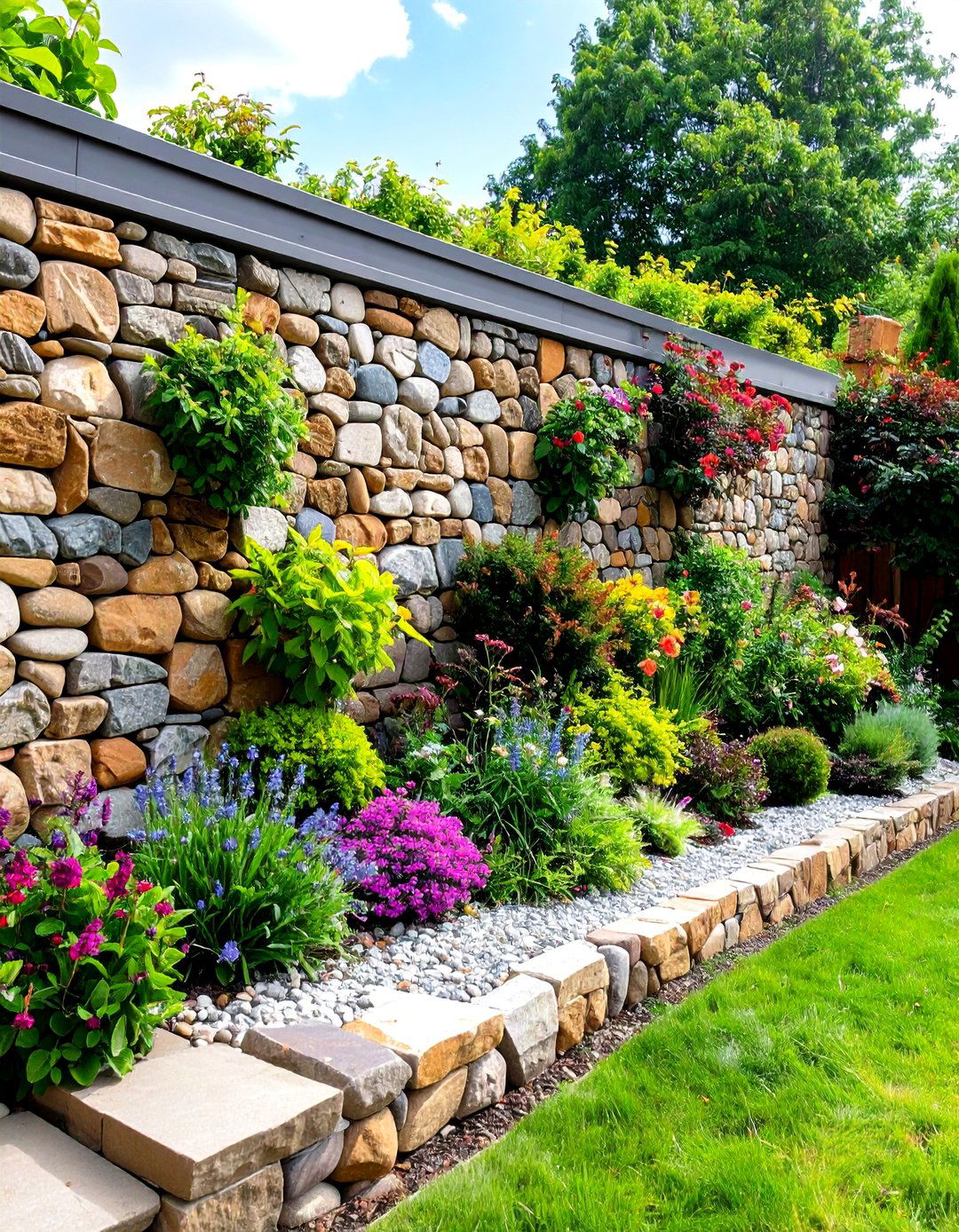
Mosaic stone walls arrange small, varied stones into patterns or images, turning a wall into an artwork. Smooth river rocks, pebbles, and tumbled stones adhere to substrate panels or mortar beds. Patterns can be geometric—hexagons, waves—or pictorial, depicting florals or abstract designs. Grout color choices accentuate stones or unify the palette. These walls suit accent niches, firebacks, or water feature facades. Indoors, mosaic stone panels enhance bathrooms and kitchens; outdoors, they enliven garden walls. While labor-intensive, mosaics offer limitless customization. Professional installation ensures panels remain level and water-resistant, preserving visual impact over years.
11. Stone Cladding Accent Wall
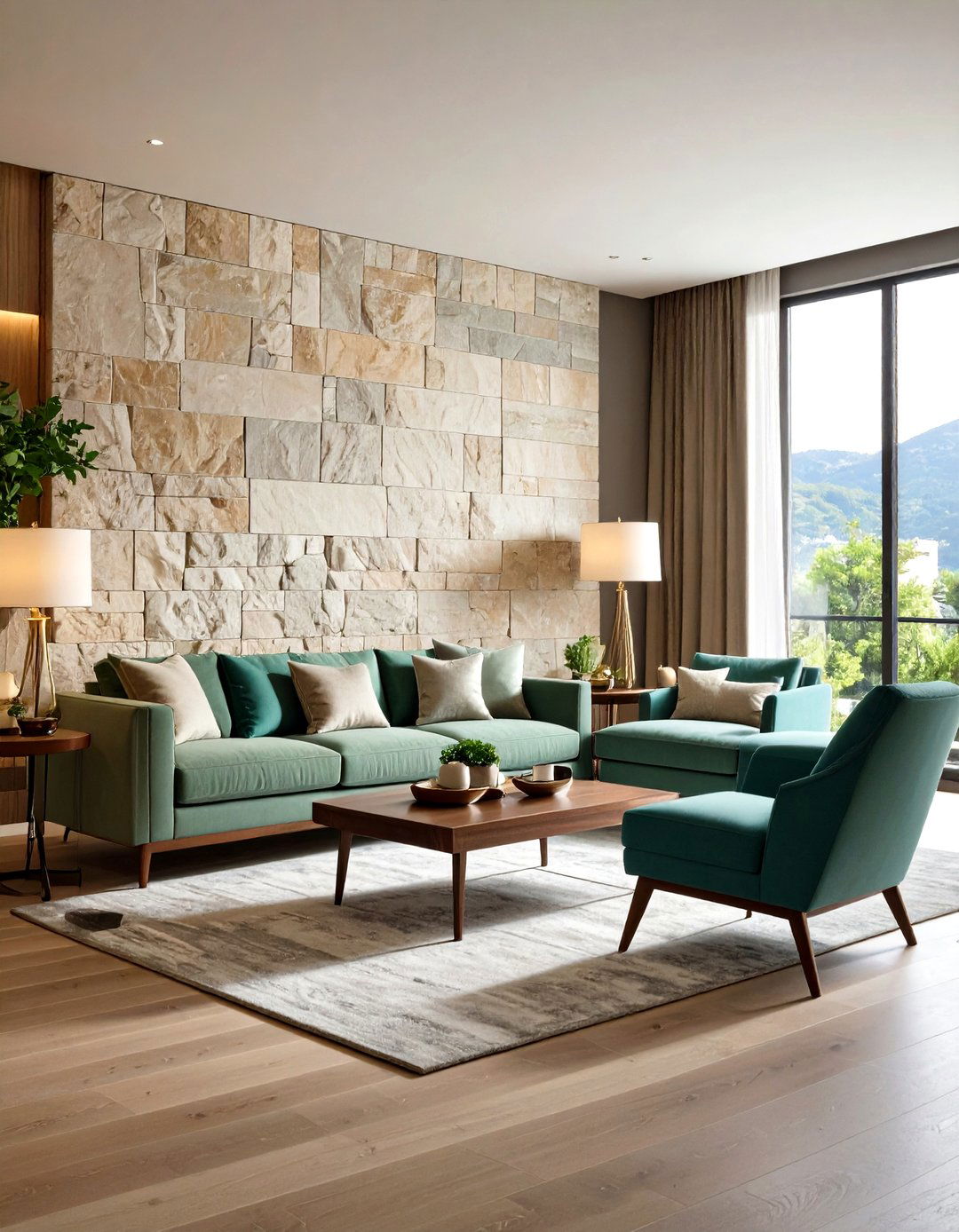
Cladding involves attaching thin stone tiles to structural walls, offering the look of solid stone with less weight. Accent walls in entryways or living rooms benefit from limestone or slate cladding, creating a striking focal point. Exterior cladding around windows or door surrounds adds depth and texture. Stone can combine with timber, render, or glass for modern contrasts. Panels often feature interlocking backs for simplified installation. By using lightweight backing materials, cladding reduces load on existing structures. Proper sealing and flashing protect against moisture ingress. Accent cladding elevates both interior design and curb appeal, delivering a luxurious, tactile finish.
12. Mortared Rubble Stone Wall
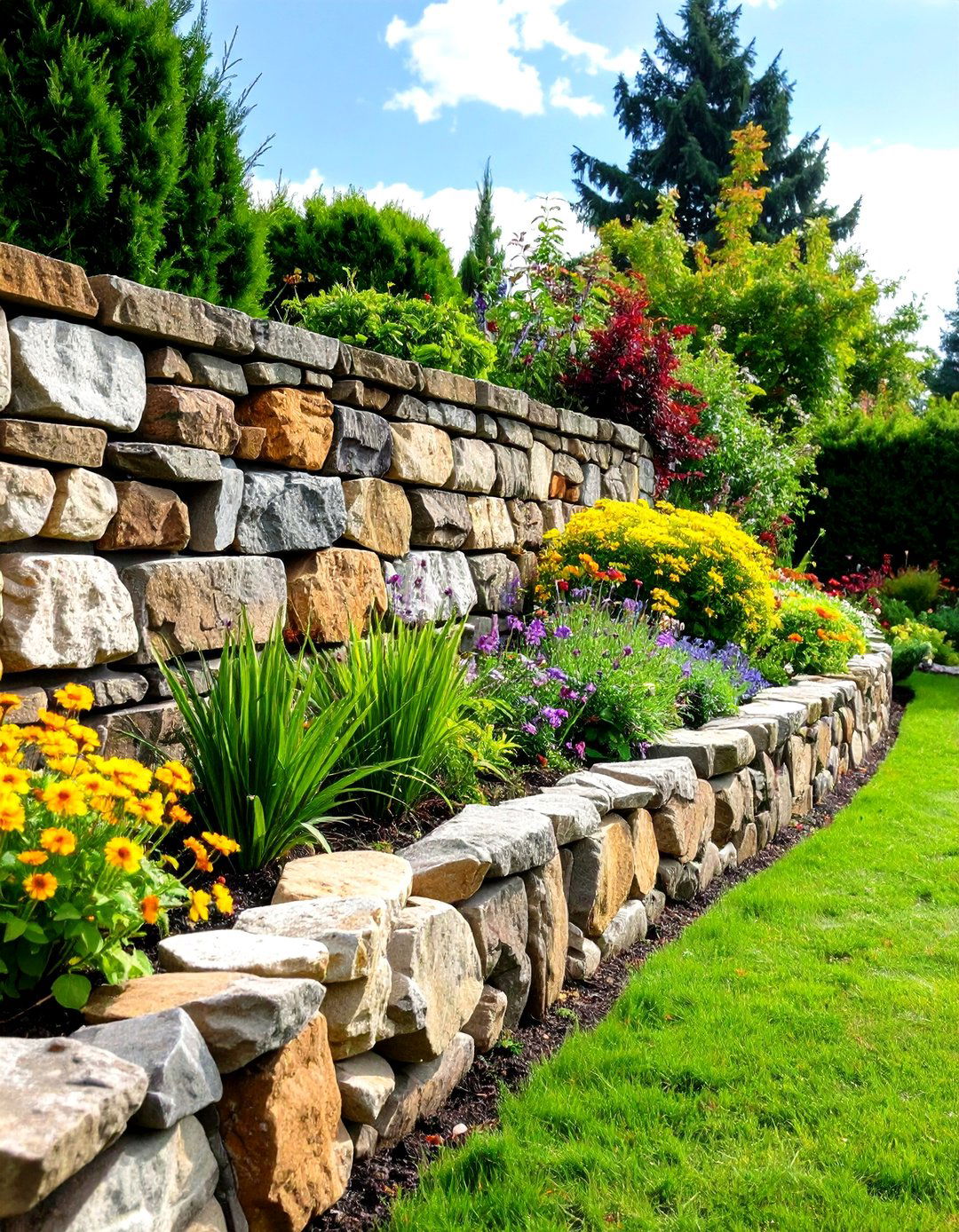
Rubble stone walls mix irregularly shaped stones set in mortar, yielding a textured, handcrafted appearance. Mortared joints fill gaps, producing a solid barrier ideal for privacy or retaining light loads. Unlike dry-stacked walls, mortar prevents stone shifting, enhancing longevity. Combine coarse rubble with finer stones to control joint thickness and surface uniformity. Weathered fieldstone or quarried rubble can be used, showcasing varied hues. Top the wall with a concrete or stone cap to prevent water infiltration into joints. Mortared rubble walls suit both historic restorations and new constructions, offering a balance between rustic charm and structural reliability.
13. Cobbled Pathway Edge Wall
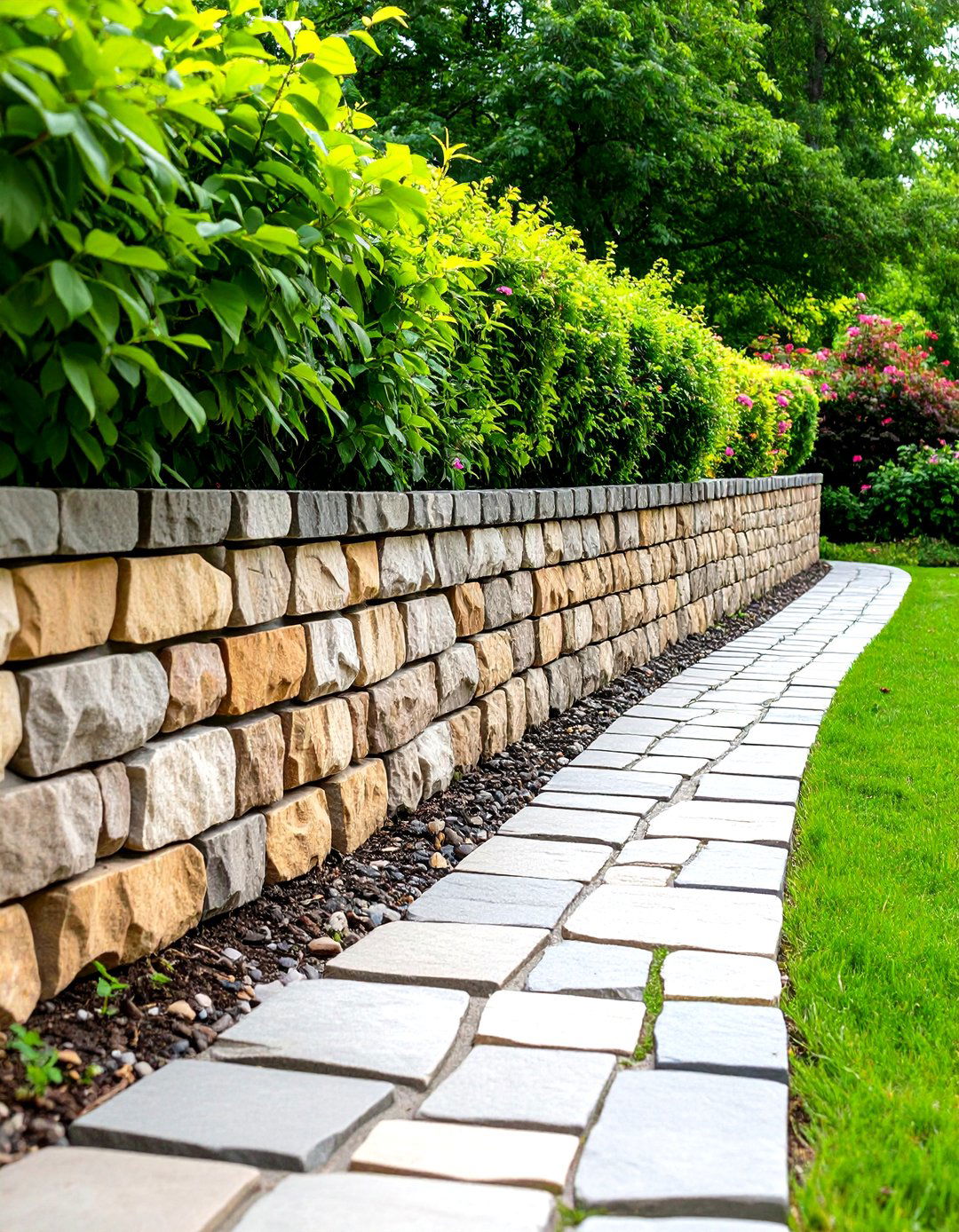
Short stone walls can border cobblestone pathways, defining walkways while containing gravel or turf. Edging stones—set vertically—create a crisp transition between path and planting beds. The wall height ranges from a single stone thick to two or three courses high, depending on design. Cobblestone tops can match pathway pavers, expanding continuity. This treatment prevents grass encroachment and soil erosion onto paths. Moss or low groundcovers can fill joints for a historic feel. Cobble-edge walls are durable under foot traffic and resist displacement by weather. Their modest height retains visual lightness while adding refined detail.
14. Natural Boulders Retaining Wall
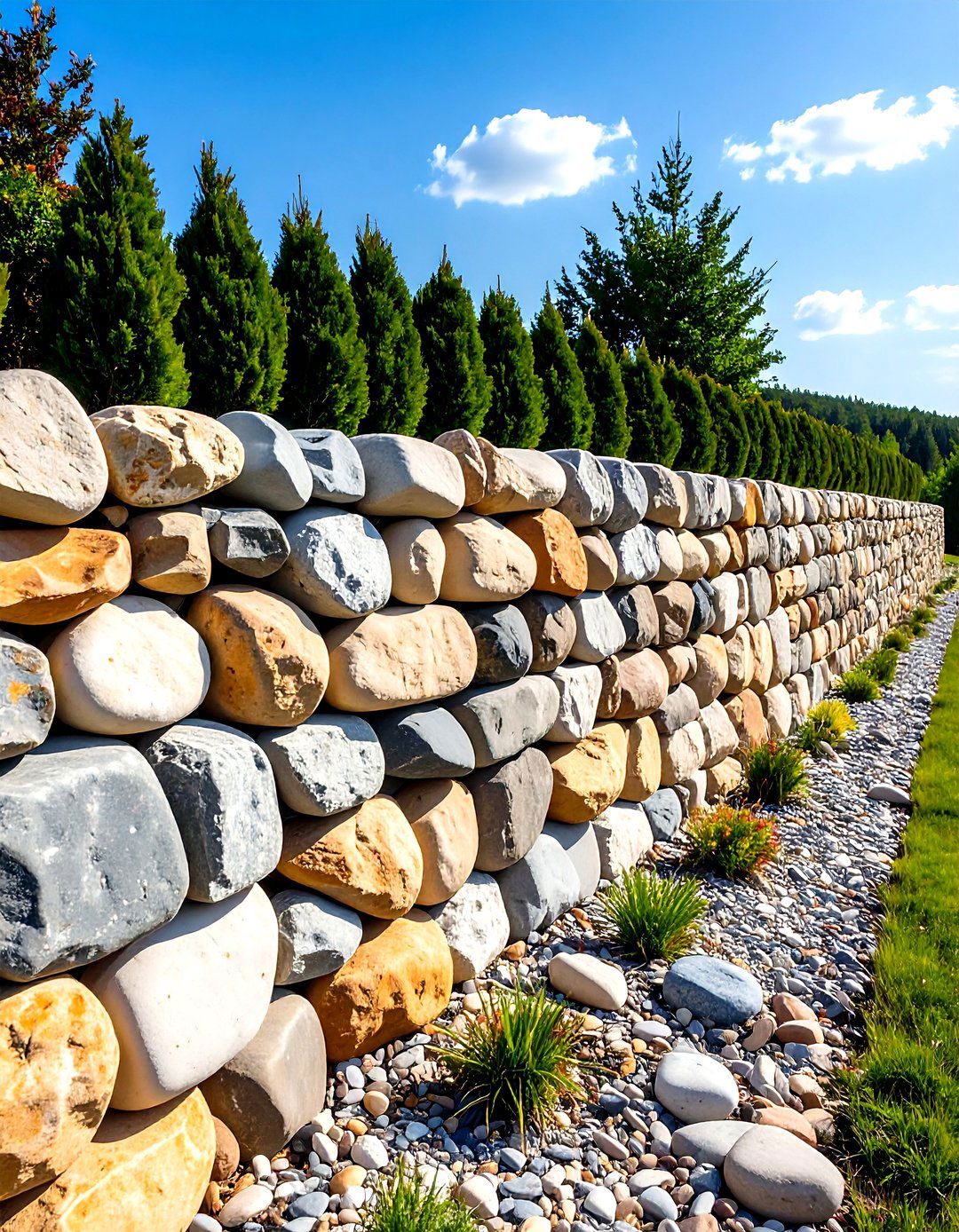
Using large, uncut boulders creates a rugged retaining wall that blends seamlessly into rockier landscapes. Boulders—some weighing several tons—are placed on compacted gravel foundations. Gaps between stones are filled with smaller rocks and soil for stability. The wall’s irregular profile echoes natural outcrops, ideal for woodland gardens or mountainous properties. Over time, moss and lichens colonize the stones, further integrating the wall into its surroundings. This approach demands heavy equipment and precise placement but rewards with an organic, ancient appearance impossible to replicate with cut stone.
15. Cast Concrete Stone Look Wall
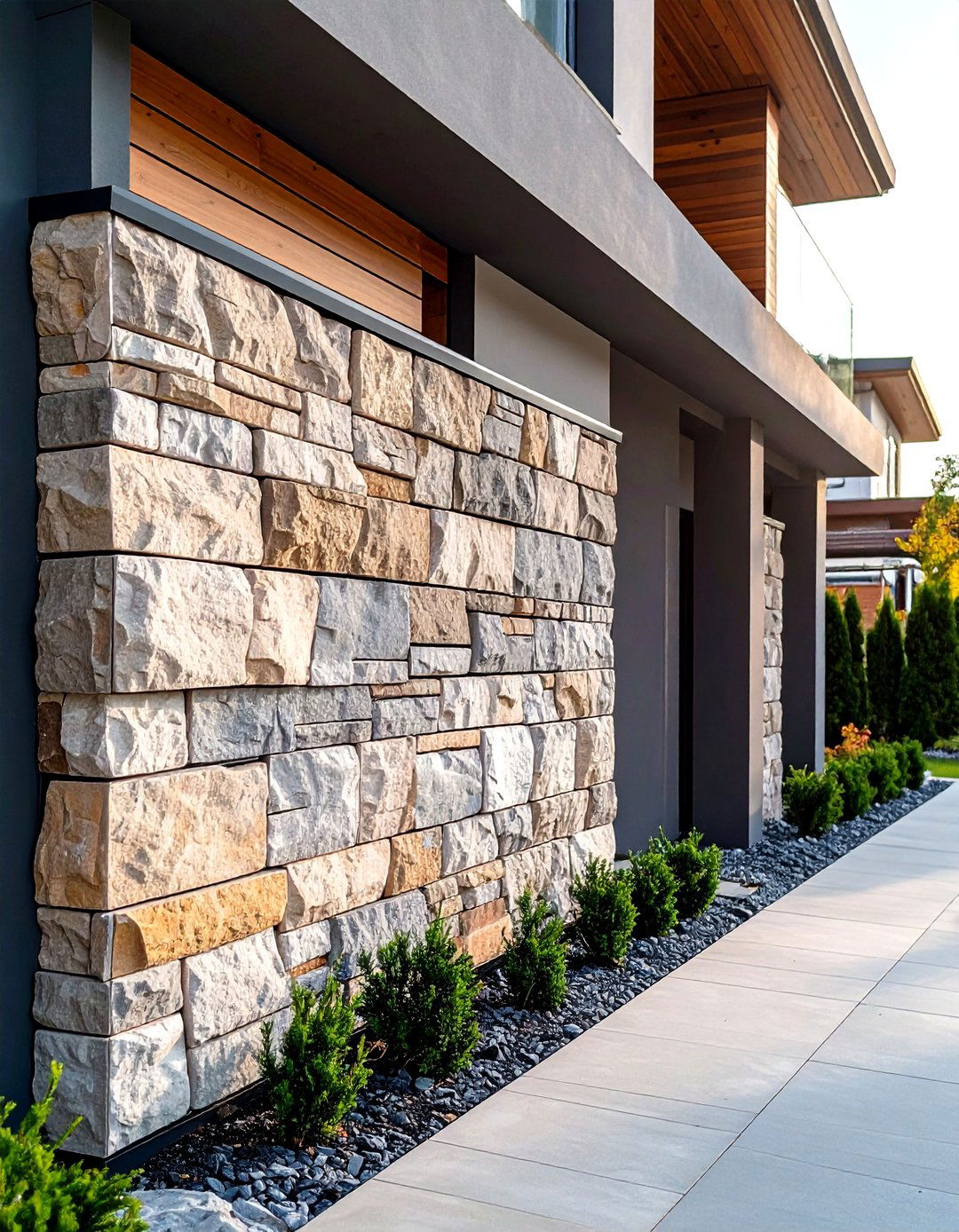
Stamped or cast concrete panels mimic stone textures—such as sandstone or limestone—at lower cost and weight. Panels attach to framing or existing walls, with joints designed to replicate mortar lines. Modern pigments ensure UV-stable coloring. This method accelerates installation and reduces skilled stonemasonry requirements. Concrete panels withstand freeze-thaw cycles and require minimal maintenance. Ideal for large façades or projects constrained by budget or structural capacity, they deliver uniform appearance across broad surfaces. Finishing touches—like custom cornices or ledges—enhance authenticity. Despite being manufactured, quality molds produce convincing stone grain and variation.
16. Curved Undulating Stone Wall
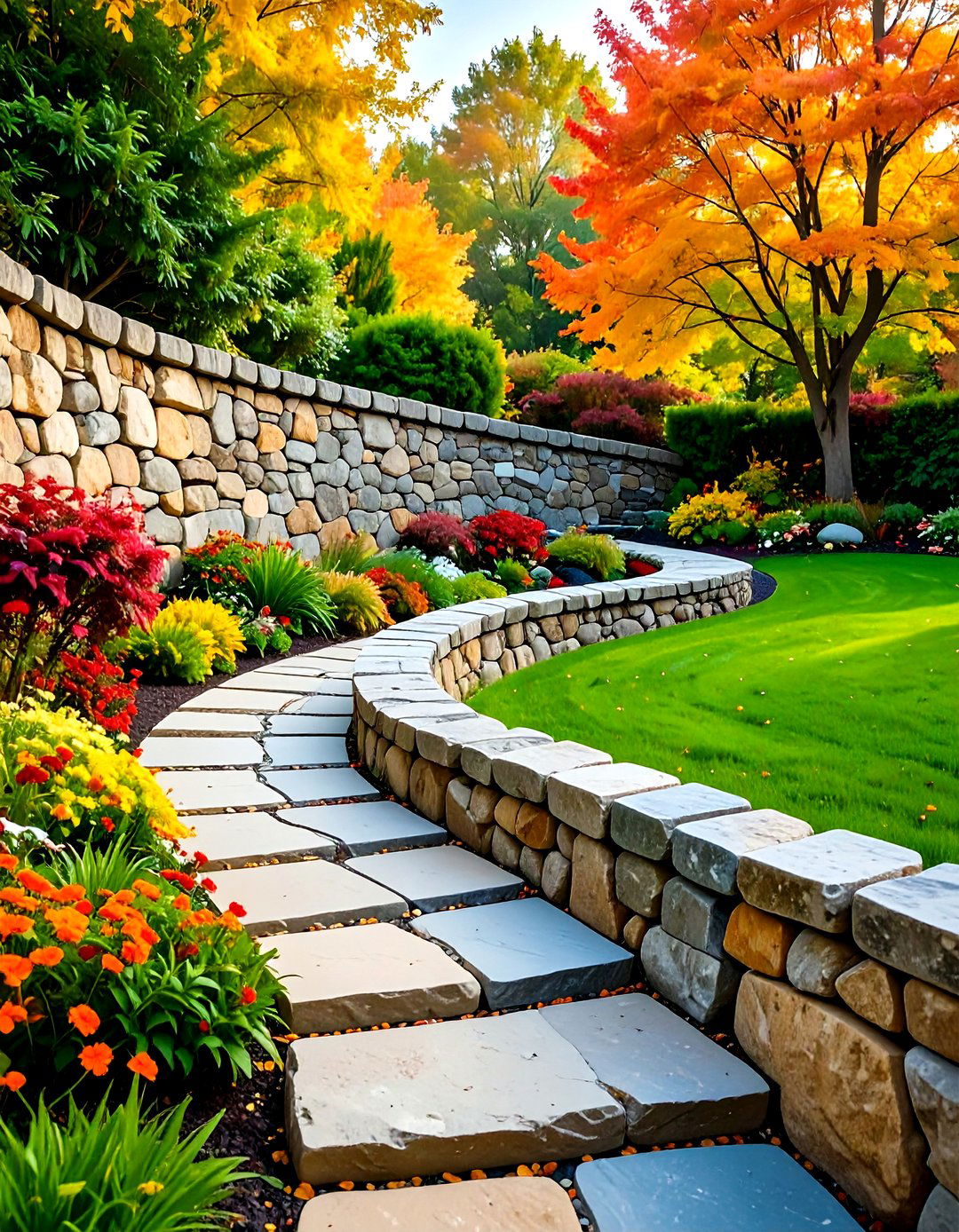
Curved stone walls introduce graceful movement into landscapes, guiding views and softening rigid layouts. Undulating walls—alternating convex and concave curves—add rhythm and visual interest. Constructed with dry-stacked or mortared stone, the curves require careful stone selection to maintain consistent radius. Low undulating walls function as seating or planters, while taller curves serve as privacy screens. Light and shadow play dynamically across the walls throughout the day. This sculptural element enhances garden pathways, courtyard perimeters, or pool surrounds, injecting artistry into structural forms.
17. Reclaimed Stone Salvage Wall
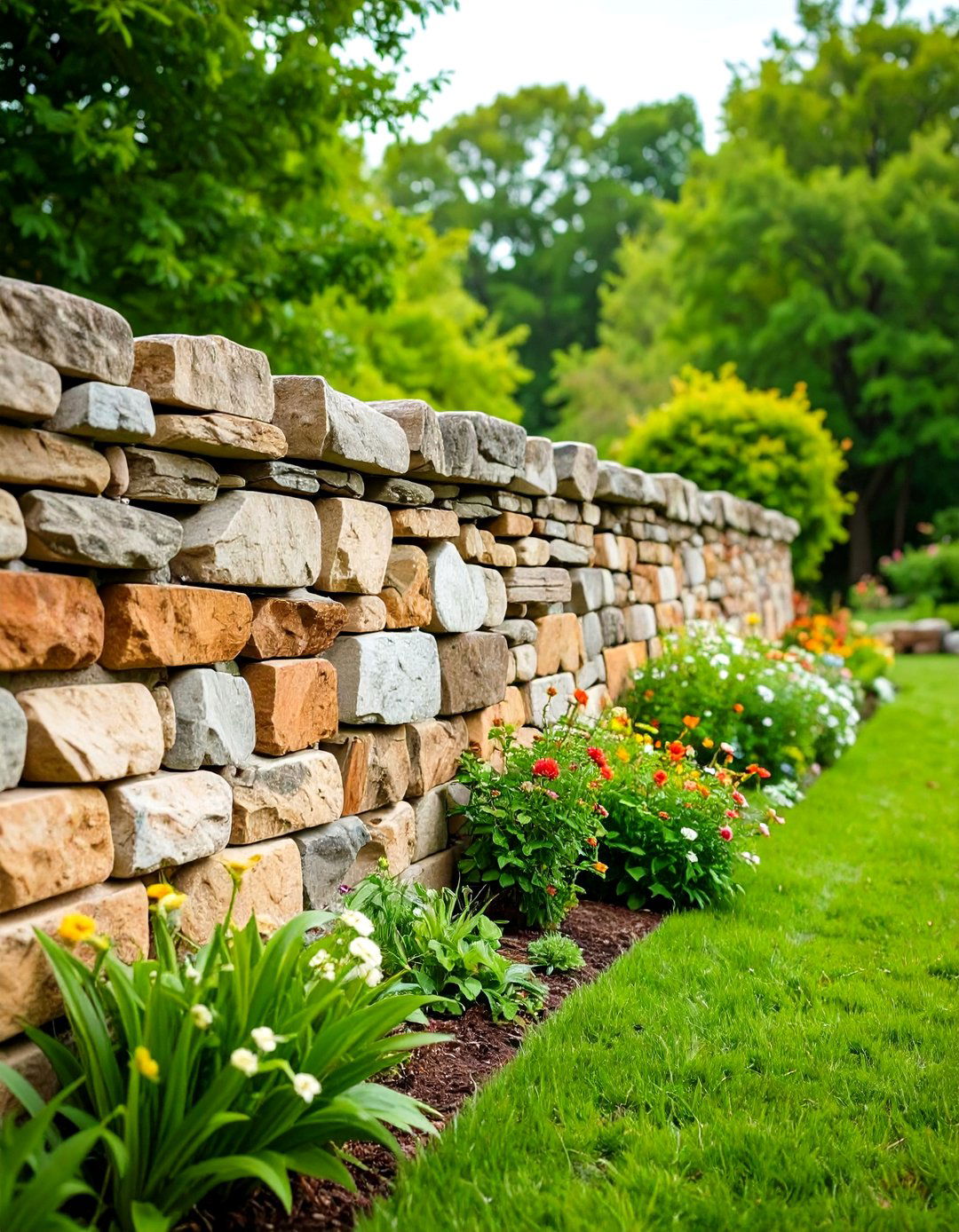
Reclaimed stone—from demolished buildings or old fences—imbues new construction with history and character. Each stone bears unique wear patterns, color variations, and patina. When laid in mortar, these stones weave a narrative of past architecture into contemporary projects. Salvage walls often feature irregular shapes and mixed sources—granite lintels, sandstone blocks, or brick remnants—creating patchwork visuals. Sourcing locally reduces transport emissions and preserves regional heritage. Professional cleaning and mortar analysis ensure compatibility and prevent damage to historic fabric. Reclaimed stone walls celebrate sustainability and storytelling through building materials.
18. Feature Wall with Integrated Planters
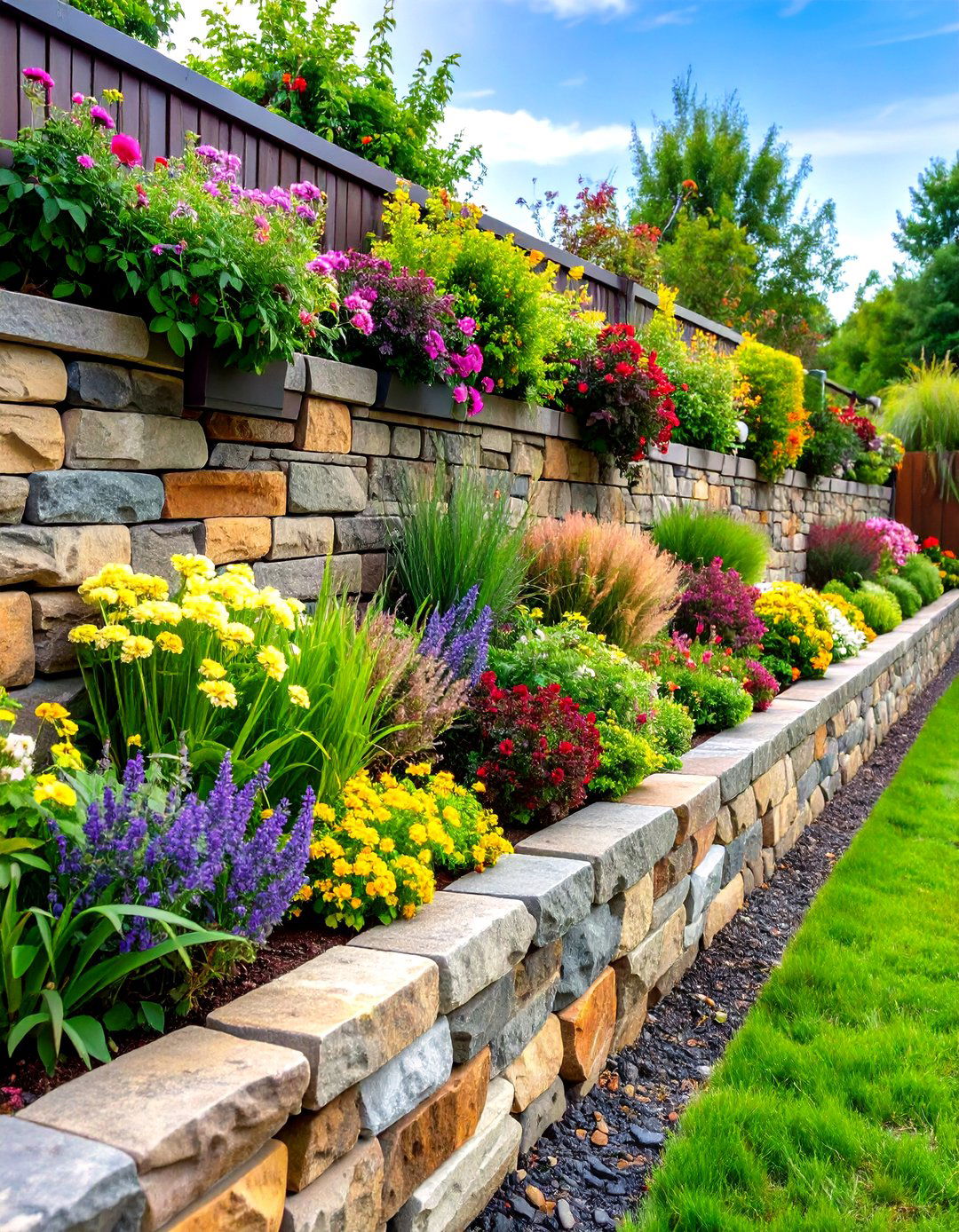
Combining stone walls with built-in planters merges hardscape and softscape seamlessly. Niches or troughs carved into the wall hold soil and plants—succulents, trailing vines, or herbs. The stones frame greenery, creating living art. Planter walls can be freestanding or part of boundary walls, softening their mass. Irrigation and drainage channels behind the wall prevent waterlogging. Varied stone sizes and colors highlight plant textures. Such walls work well in small urban gardens, balcony screens, or poolside dividers, maximizing vertical planting space and visual depth.
19. Mosaic Inlay Mortar Joint Wall
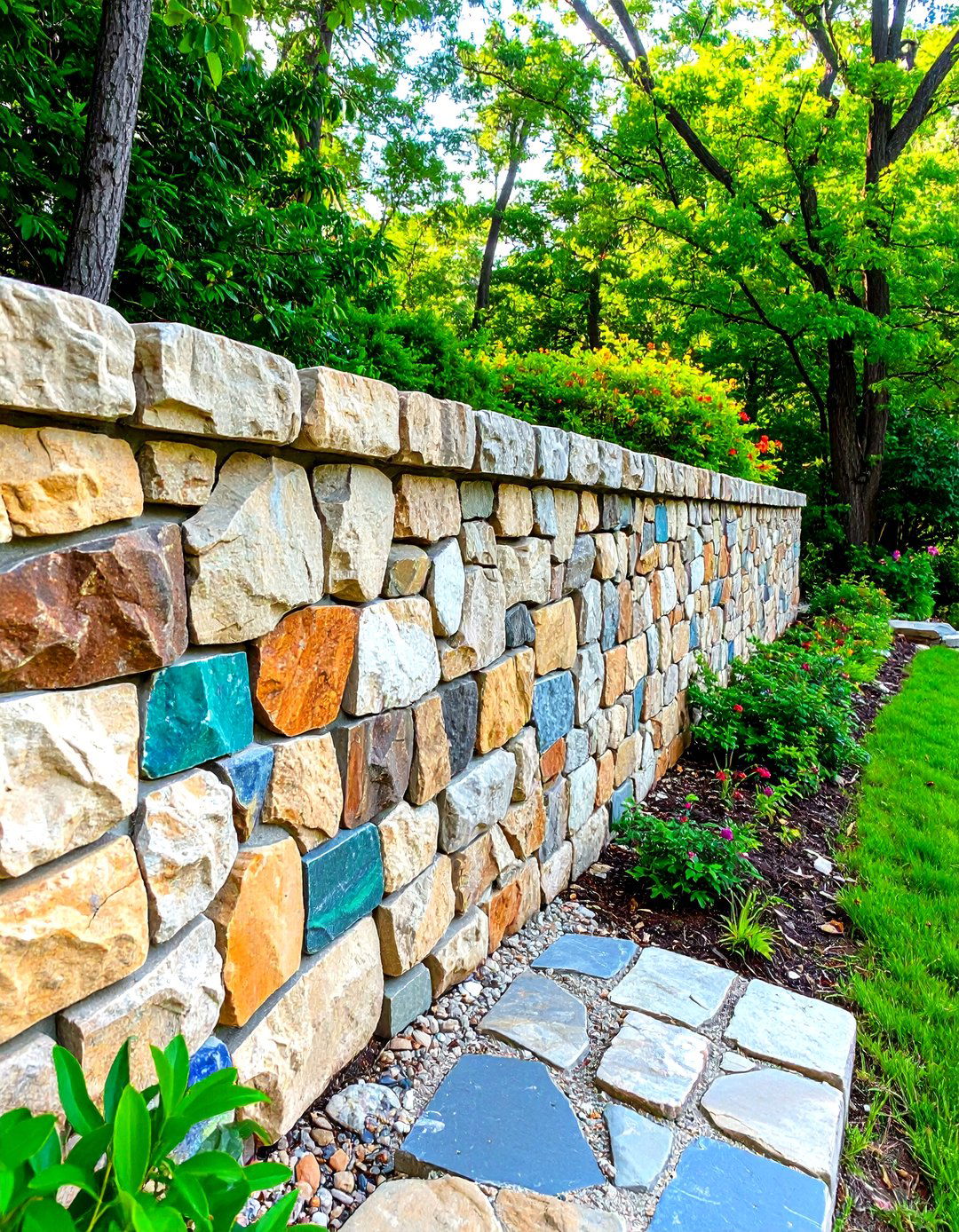
Enhance a mortared stone wall by embedding colored glass, tiles, or pebbles into the joints. This technique turns structural joints into decorative inlays, introducing color and shimmer. Patterns can follow grout lines—zigzags, checkerboards—or form motifs like leaves or waves. The base wall can be ashlar, rubble, or tile-backed panels. Careful selection of grout consistency and inlay materials ensures longevity and ease of cleaning. Mosaic inlay joint walls suit accent features indoors and out, adding bespoke artistry to masonry.
20. Galleting Decorative Wall

Galleting involves pressing small, uniform pebbles—or spalls—into wet mortar joints of a stone wall. Originating in medieval English construction, this technique adds texture and visual cohesion. Gallets seal mortar against weathering and pests while accentuating joint lines. Common in Southeast England and Norfolk, galleted walls display contrasting pebbles—flint or quartz—against larger stones. The result is a rhythmic surface pattern that elevates otherwise plain walls into intricate compositions. Galleting requires skilled masons but yields durable, historically resonant walls.
Conclusion:
From ancient dry-stacked boundaries to modern cast concrete veneers and living planter features, stone walls offer endless possibilities for enhancing both form and function. Whether delineating property lines, crafting seating and planters, or presenting decorative mosaics, each approach leverages natural materials to create structures that endure and inspire. By selecting appropriate techniques—from traditional galleting to industrial gabion systems—designers and homeowners can tailor stone walls to suit site conditions, aesthetic preferences, and sustainability goals, ensuring these timeless elements remain integral to landscapes and architecture for generations to come.



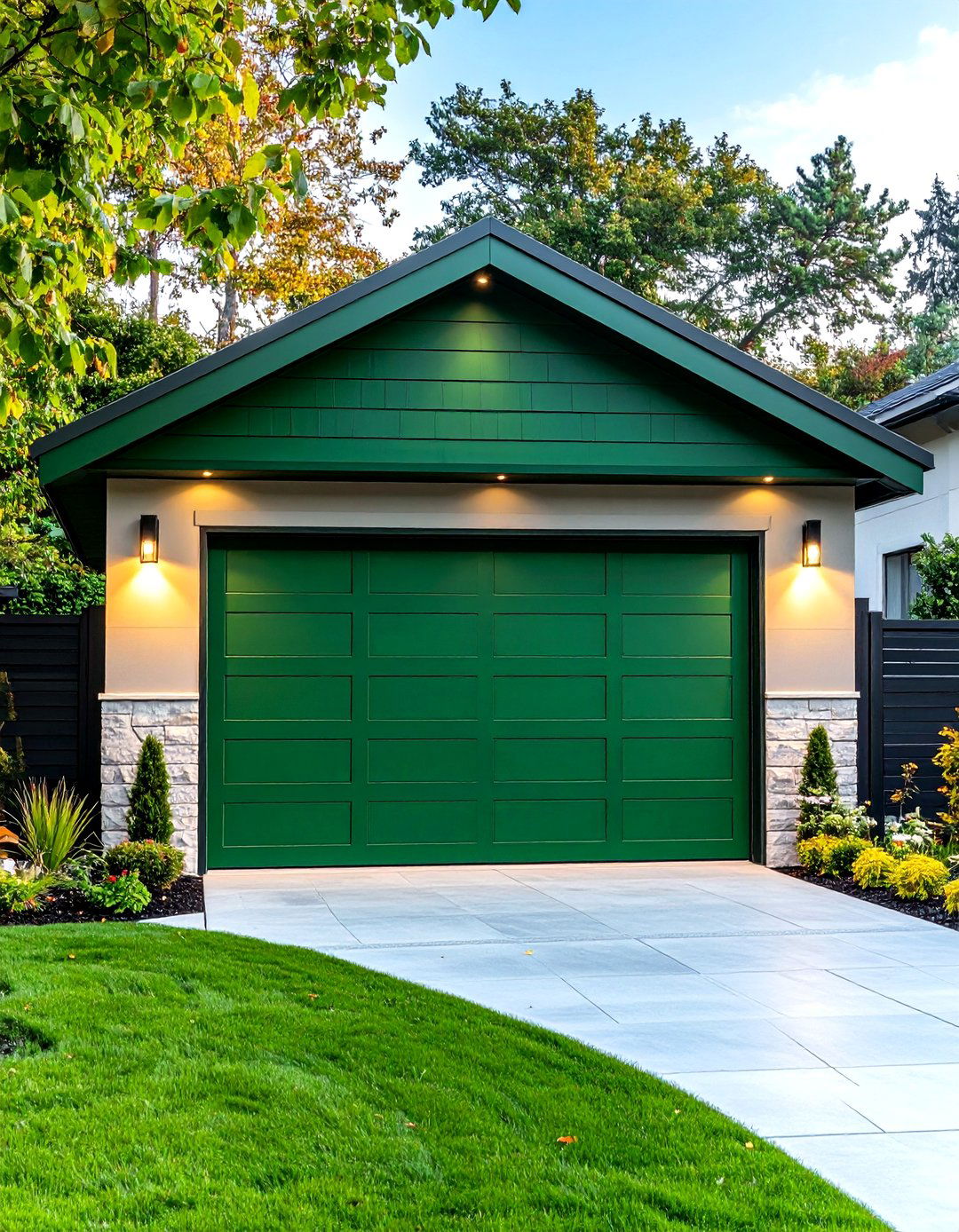
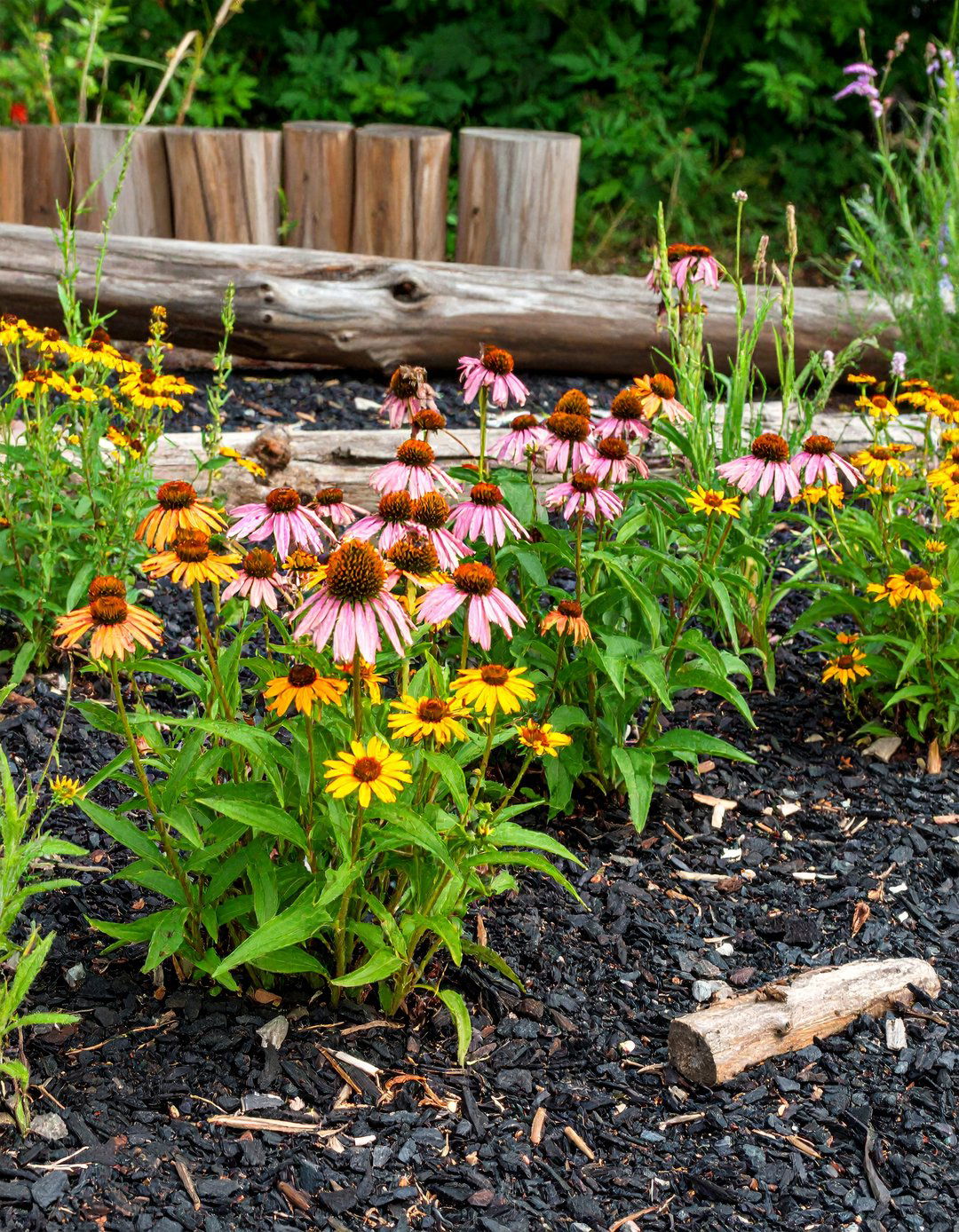
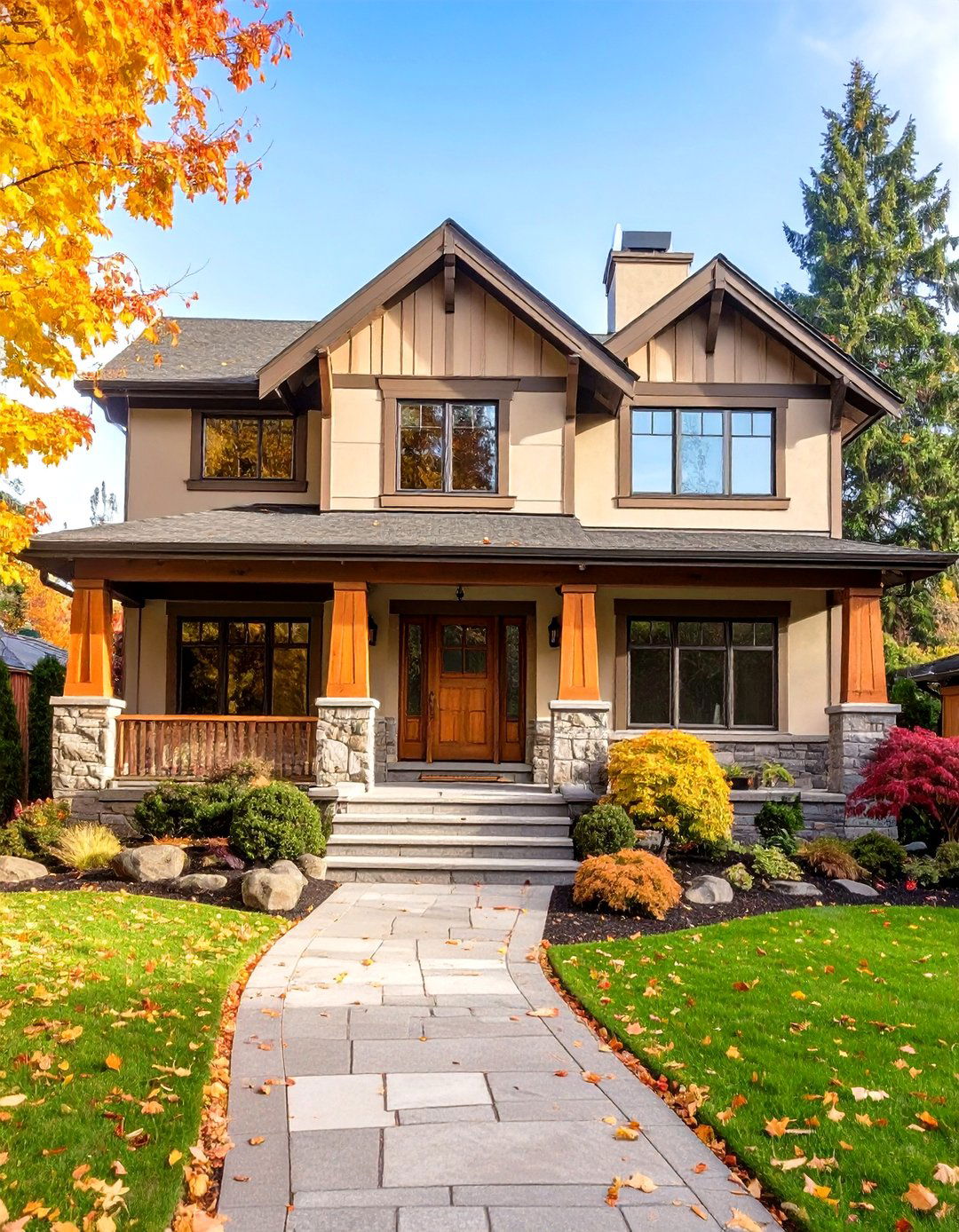
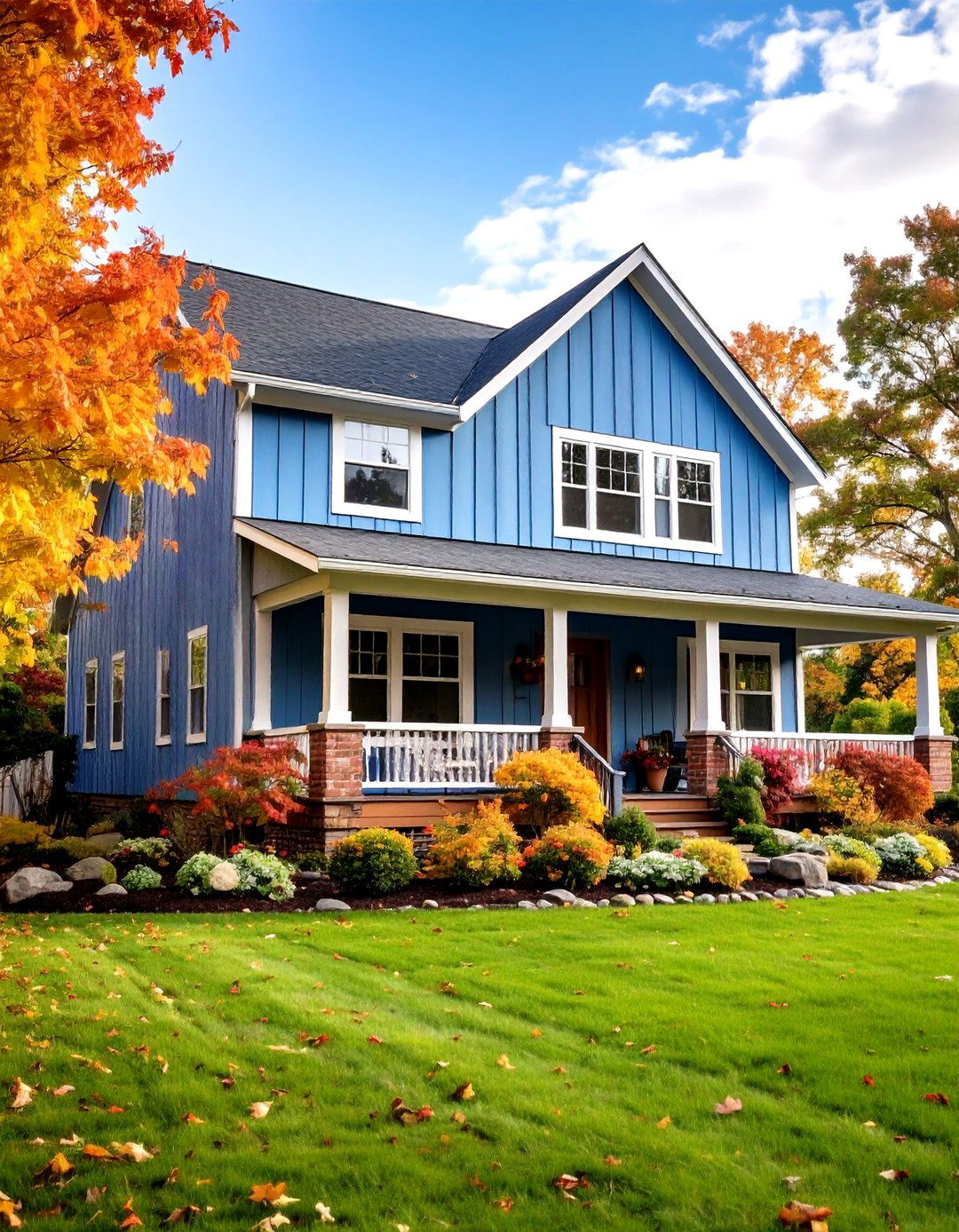
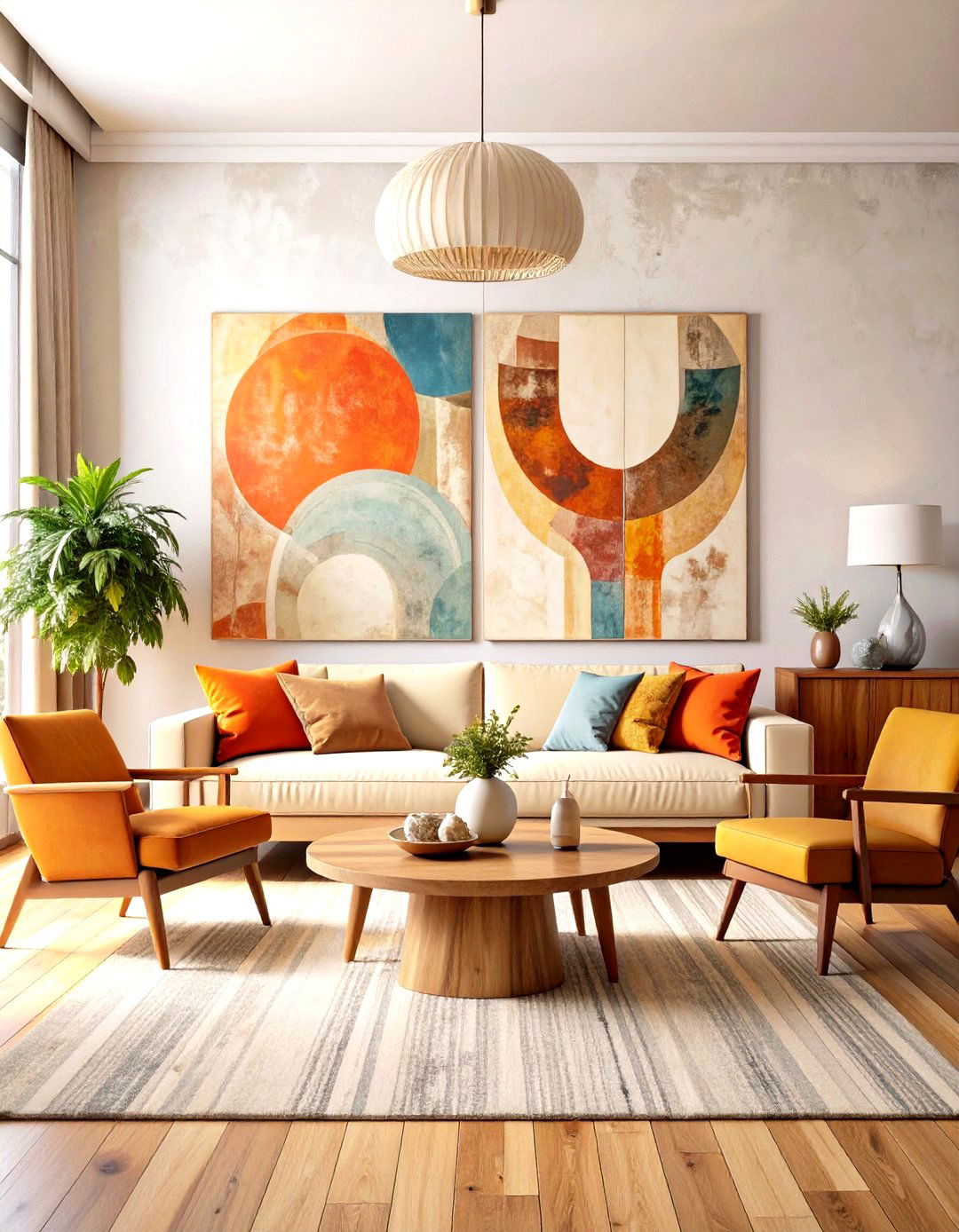
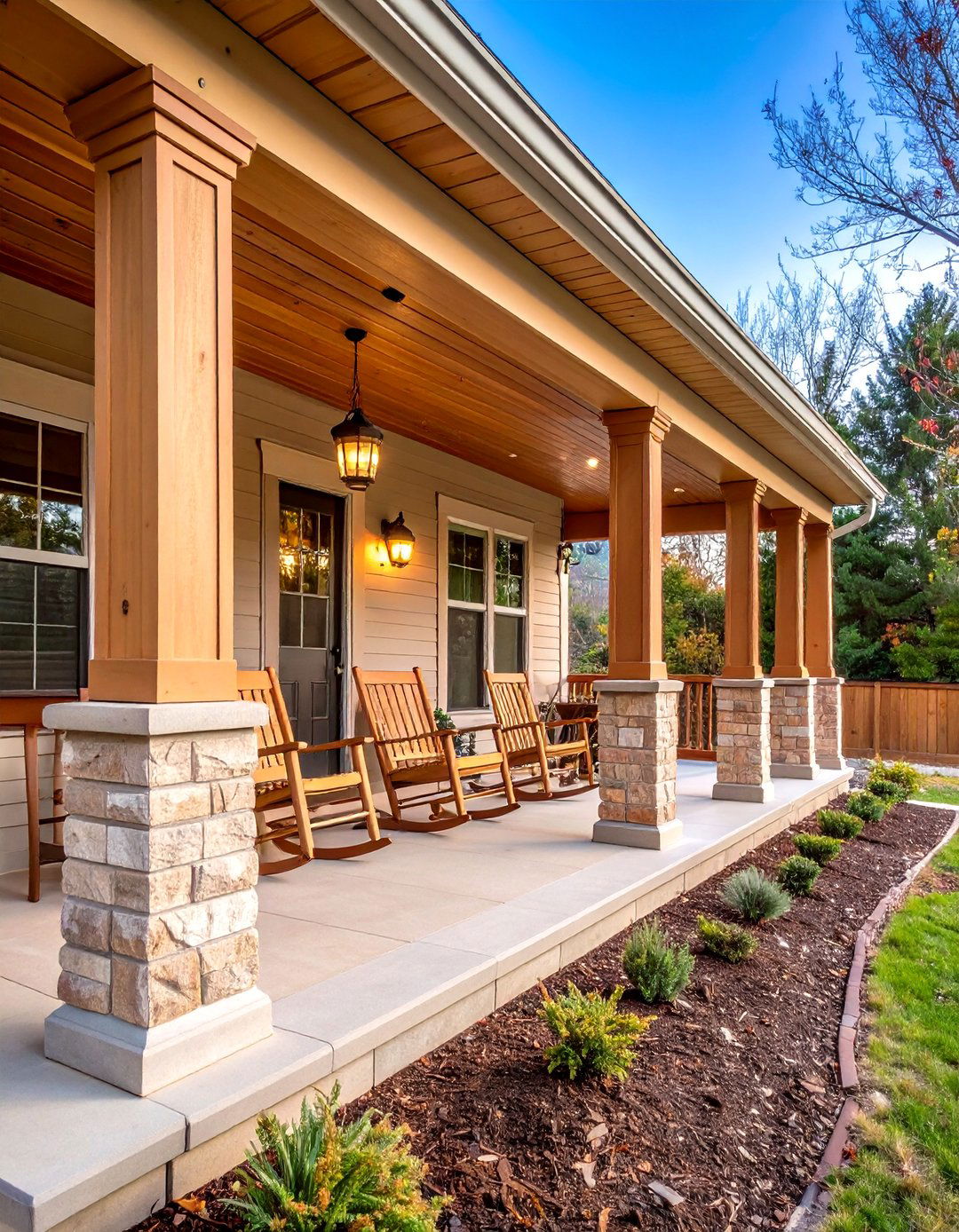

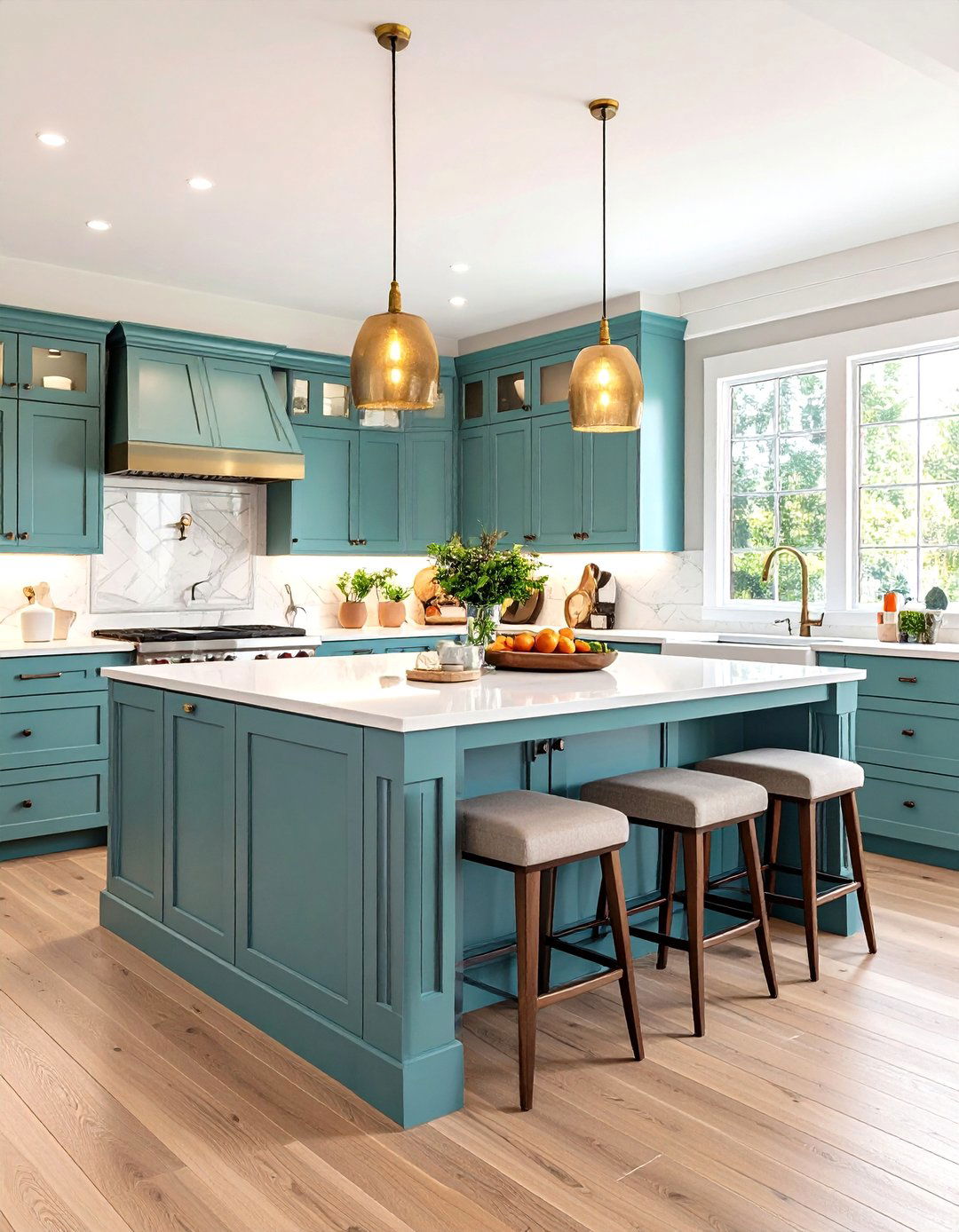
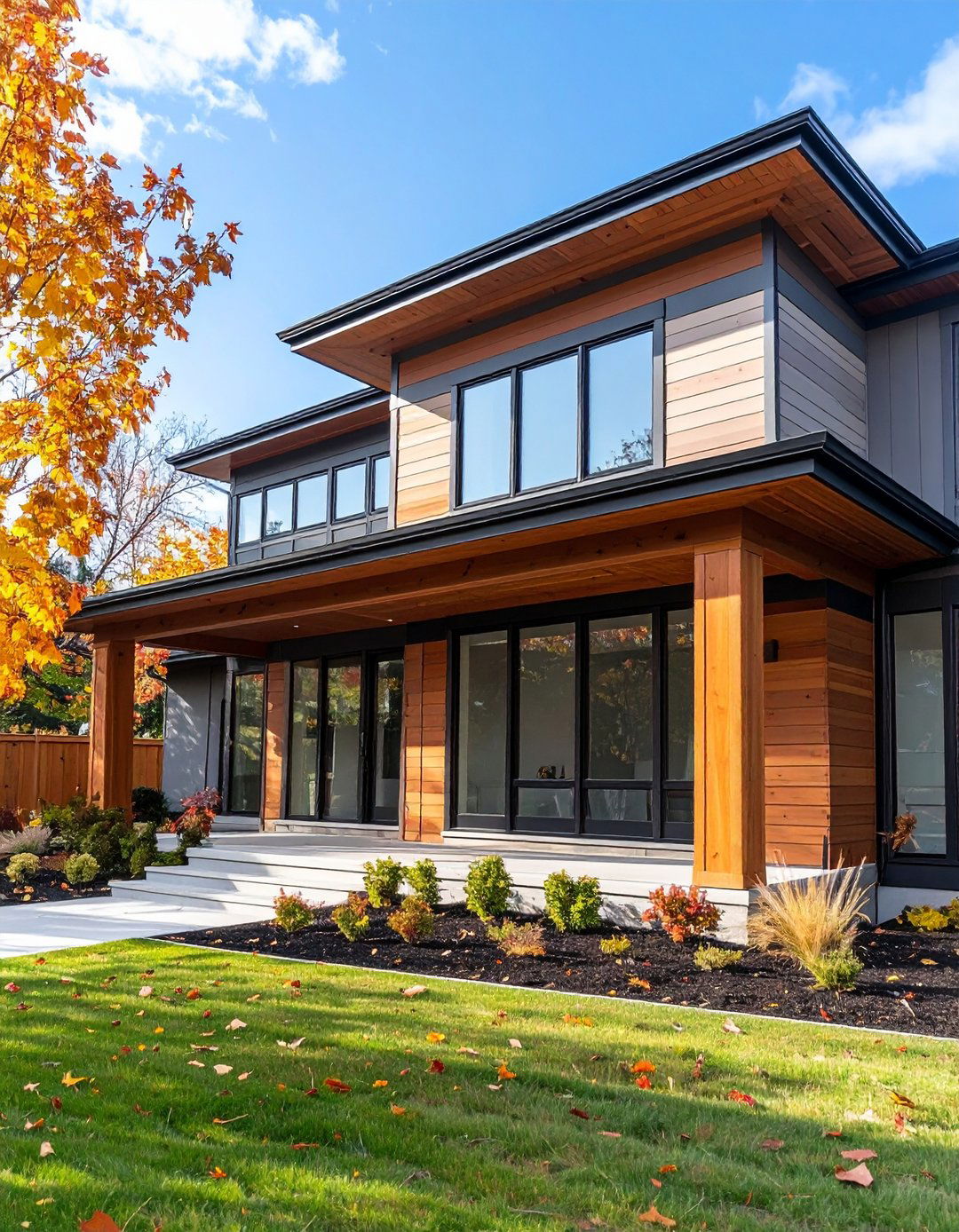

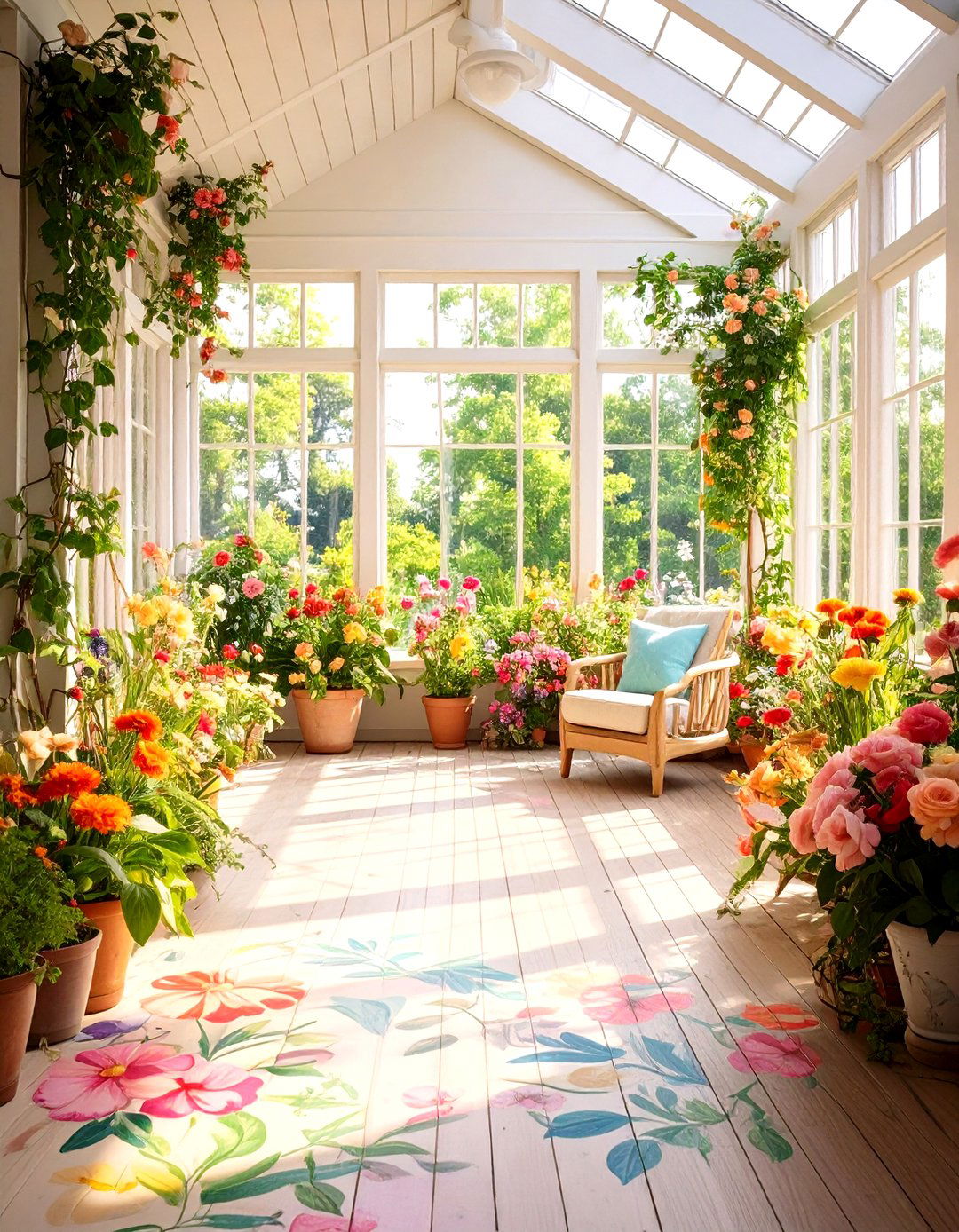
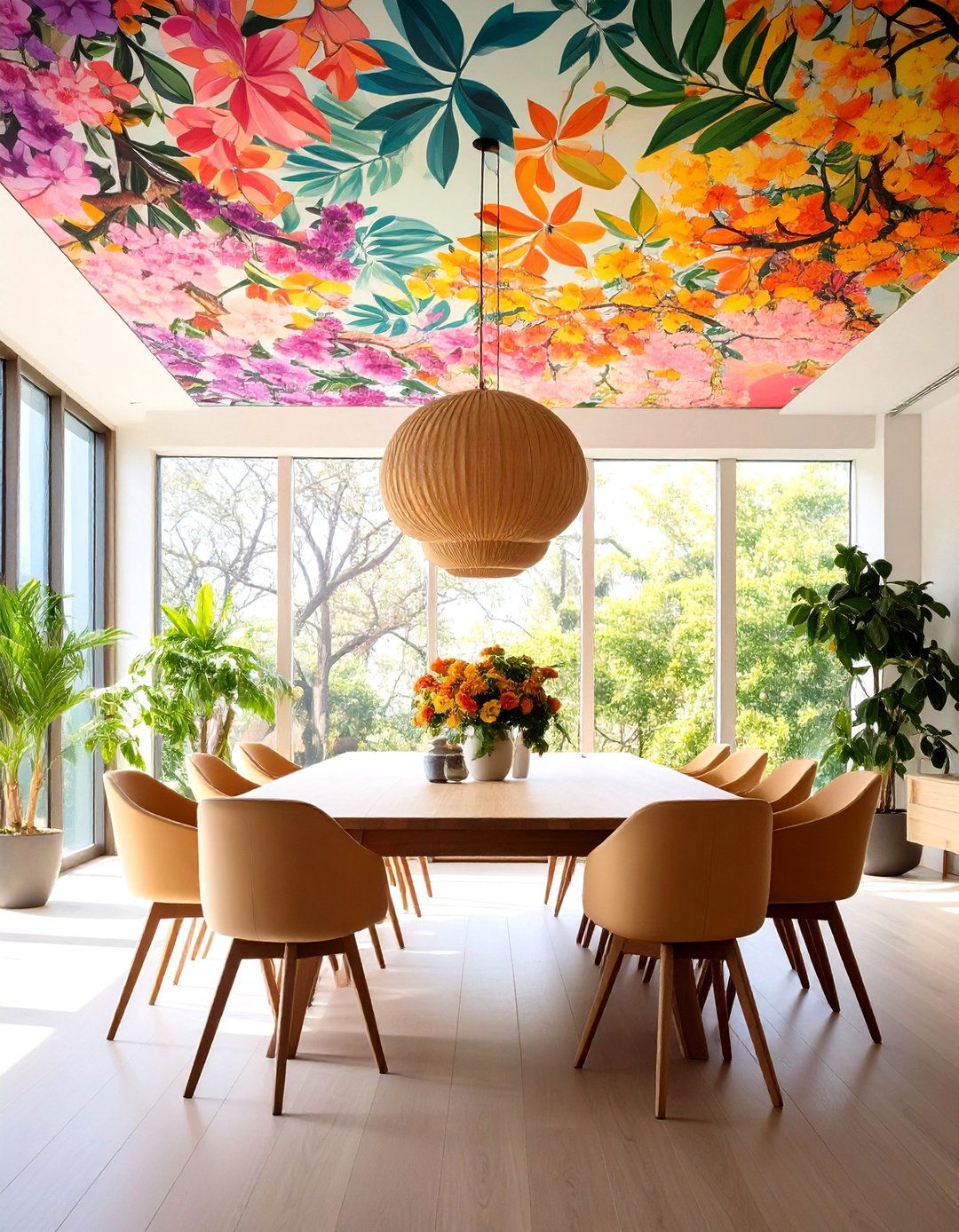

Leave a Reply